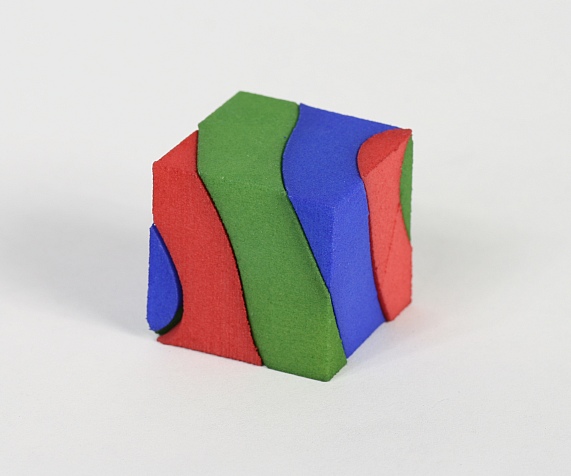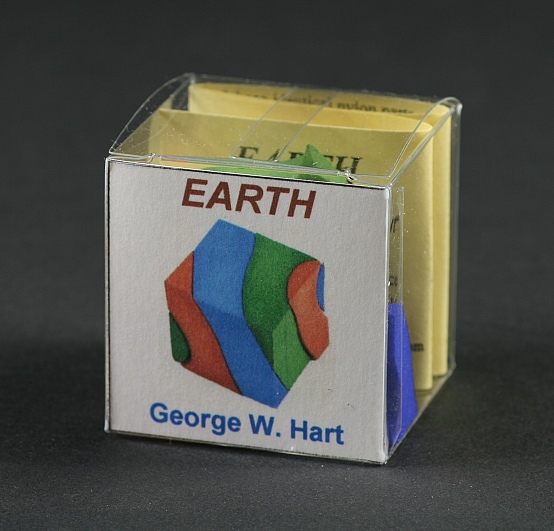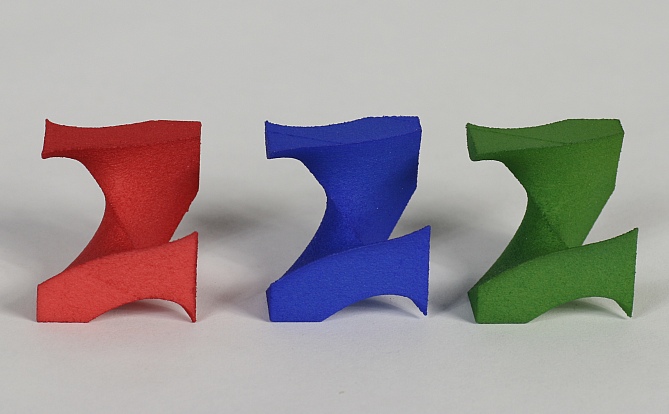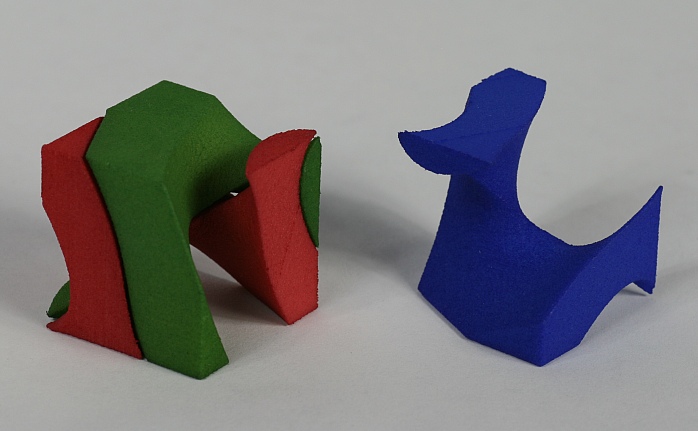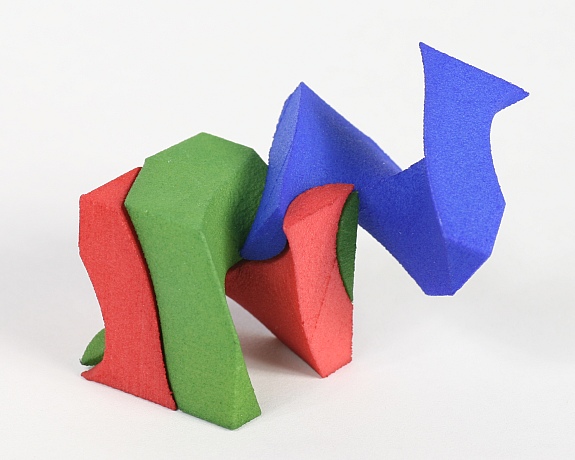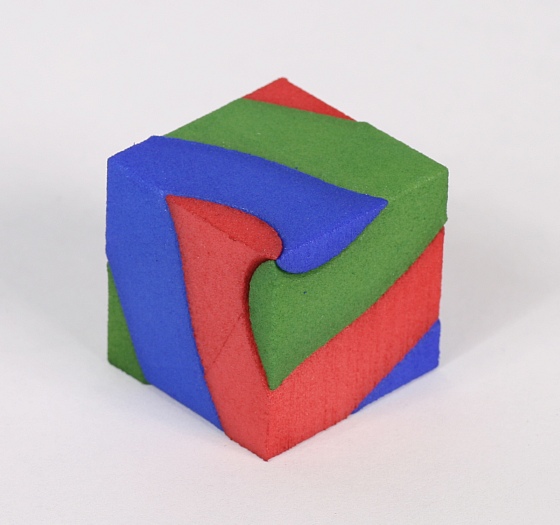|
EARTH is a
screw-together cube made of three identical nylon parts, dyed green,
blue, and
tan. The name is taken from Plato’s proto-chemical mysticism, in which
the cube
represents the classical element of Earth.
It is split along three helicoid surfaces whose axes are aligned with a
three-fold
axis, i.e. a long diagonal of the cube. I chose the helicoid pitch to
make 1.5
left-hand thread revolutions, which seems to make a good puzzle.
This
is one instance within a family of related screw dissections that
others have also explored. Martin Gardner credits a related three-piece
cube
dissection to John E. Morse. [The Magic Numbers of Dr. Matrix,
Prometheus Books, 1985, p. 319] William
Huff describes related forms used as exercises in an architectural
design
class. [William Huff, “Trisecting the Cube”]
I came to appreciate the elegance of this family of forms
after seeing a
two-piece screw-together tetrahedron that Rinus Roelofs designed and
brought to
the 2005 Bridges Conference [www.bridgesmathart.org]. A different three-piece
screw-together cube, designed by Robert Reid in the 1980s and recently
realized
by Oscar van Deventer and George Miller, is commercially available at puzzlepalace.com. Earth has a different screw
pitch and was designed without
knowledge of theirs. |
